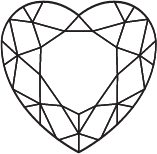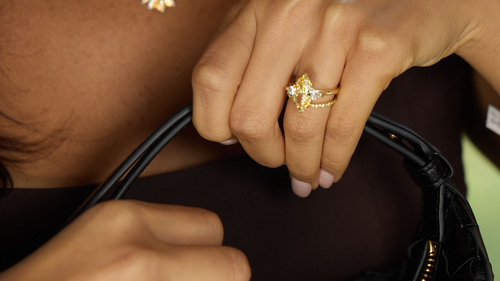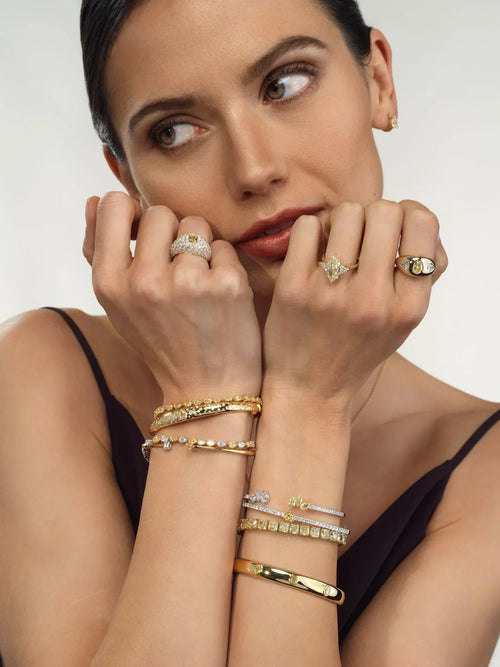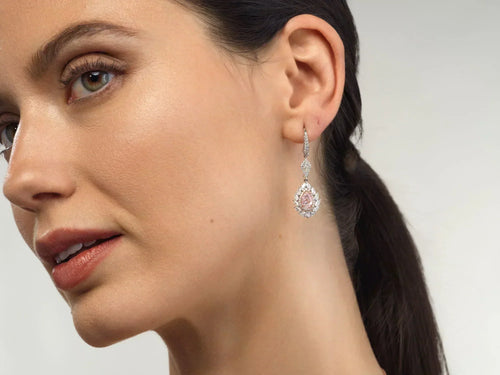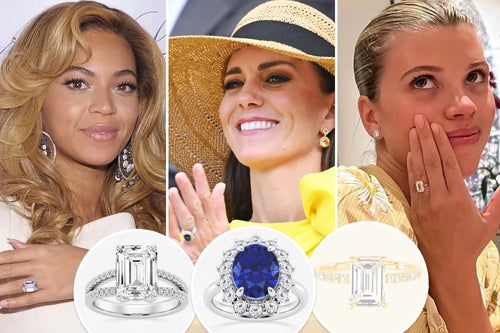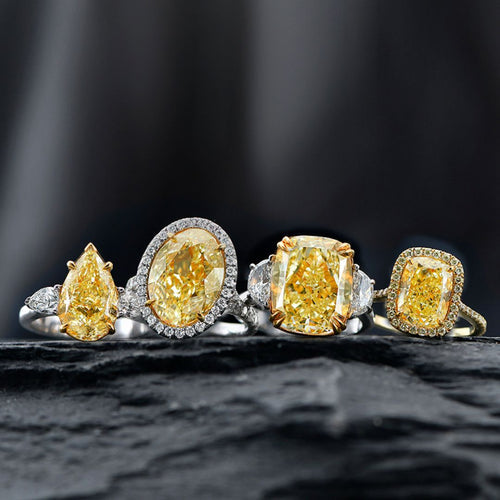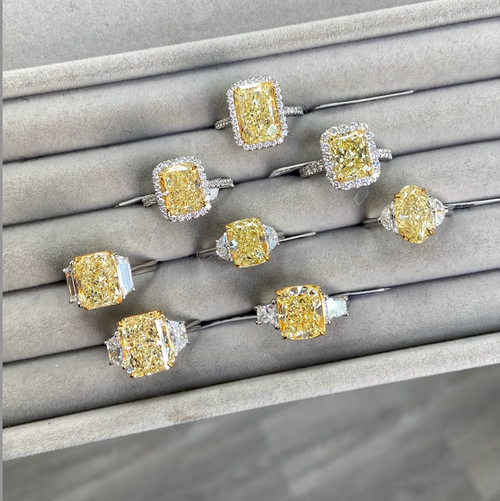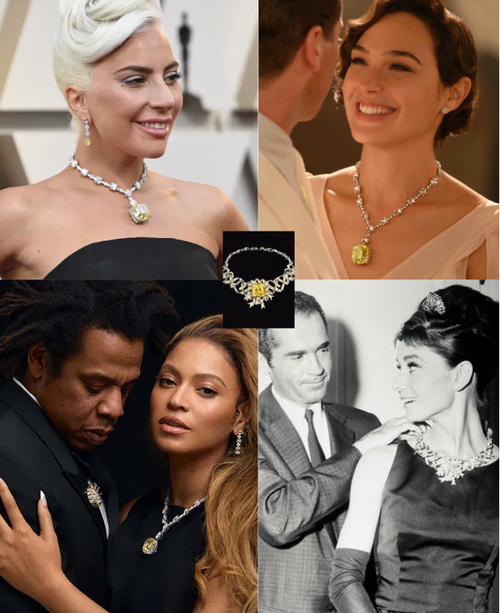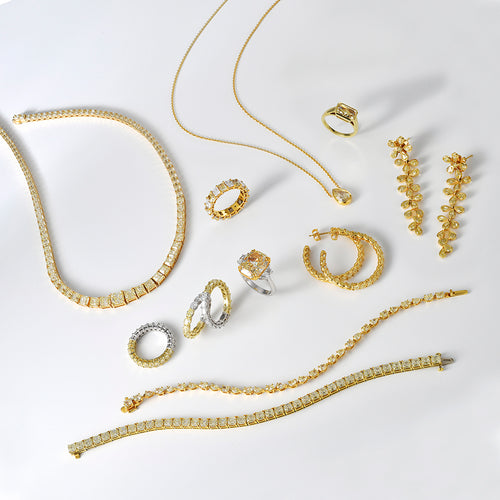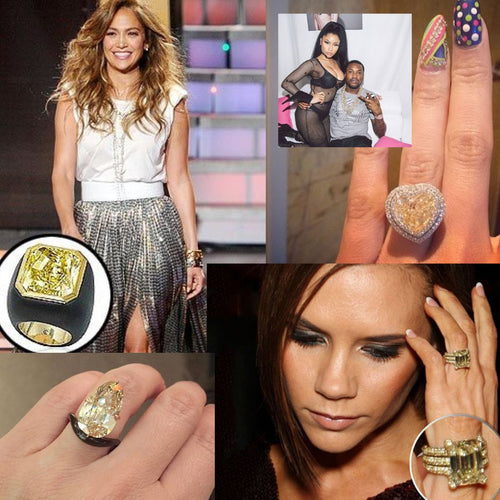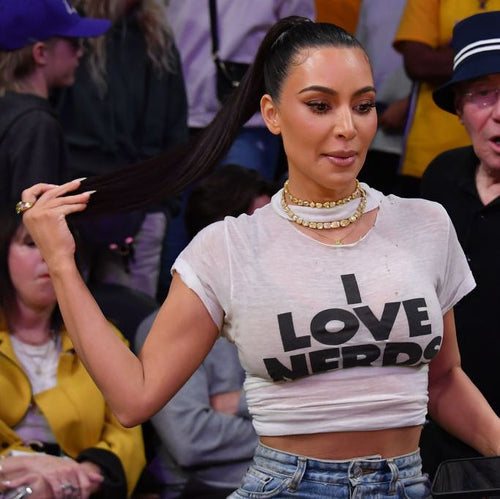Let's Design your Custom Ring. Call us at (212) 522 9918
Forget fleeting trends. Some statements are eternal. Born from the earth and kissed by the sun, fancy yellow diamond jewelry isn’t just an accessory; it's bottled sunshine, a piece of tangible light with a story as unique as your own.
This is the definitive, no-nonsense guide for the discerning buyer. We’re cutting through the noise to give you the expert insights you need—whether you’re seeking a modern heirloom, a smart investment, or a bold expression of personal style. Maybe you're looking for a piece with the jaw-dropping rarity that turns heads on Park Avenue, or perhaps you're focused on the long-term value and fascinating history of a tangible asset. Or, maybe it’s about finding that one-of-a-kind symbol that tells your unique story, a choice made with the utmost confidence because you’ve done the research and demand nothing but the best. Whatever your reason, we’re here to help you find your sunshine.
What Makes a Yellow Diamond Yellow?

Let’s get one thing straight: the mesmerizing color of a natural yellow diamond isn’t magic—it’s pure, beautiful science. Deep within the Earth, as a diamond forms under immense pressure and heat, trace amounts of nitrogen can get trapped in its carbon crystal lattice. These nitrogen atoms alter the way the crystal absorbs light, absorbing blue light and reflecting a stunning yellow hue back to your eye.
It’s a beautiful accident of nature, and an incredibly rare one at that. Only one in about 10,000 diamonds has a fancy color, and a vibrant, pure yellow is a standout even within that exclusive club. This isn't just a stone; it's a geological miracle, a fact that speaks directly to those who value true rarity and exclusivity.
How to Speak Fluent 'Fancy Color'
By now, you're probably aware of the 4Cs, but when it comes to fancy yellow diamond jewelry, the old rules don't quite cover it. Color isn't just a factor; it's the main event. Understanding how that color is graded is the key to making a confident, informed choice—the kind of choice that leaves no room for doubt.
The All-Important Color Scale

When evaluating a fancy yellow diamond, the most crucial factor is its color intensity. The Gemological Institute of America (GIA) grades yellow diamonds on a scale that measures the strength and purity of their color:
-
Fancy Light
-
Fancy
-
Fancy Intense
-
Fancy Vivid
As you move up the scale from Fancy Light to Fancy Vivid, the color becomes richer, deeper, and exponentially rarer—and so, more valuable.
You’ve likely heard the term “Canary Diamond.” So, what is it? Believe it or not, "Canary" is a trade term, not an official GIA grade. It’s used to describe a pure, Fancy Intense or Fancy Vivid yellow diamond with no secondary color modifiers. It’s the best of the best, a term that signifies top-tier, vibrant color that’s as bold as it gets. It's also crucial to understand secondary modifiers. Sometimes, a yellow diamond will have hints of other colors, noted on a GIA report as “brownish yellow,” “greenish yellow,” or “orangy yellow.” While these stones can be stunningly beautiful, the presence of a secondary color typically makes them more accessible in price than a pure yellow.
Diamond Cut, Clarity , and Carat: The Supporting Cast
While color is the star of the show in fancy yellow diamond jewelry, the other Cs play vital supporting roles. However, their importance is judged through a different lens than with colorless diamonds.
Diamond Cut and Fancy Yellow

With a traditional white diamond, the cut is all about engineering a facet structure that maximizes brilliance and fire—that classic, fiery sparkle. But for a fancy yellow diamond, the cutter’s mission is entirely different. The primary goal is to maximize and intensify the color. Every facet is angled not just to reflect light, but to trap it, forcing it to bounce around inside the stone and deepen that gorgeous yellow hue before returning to your eye.
This is why you’ll see certain shapes, or cuts, far more often with fancy yellows. Radiant and cushion cuts are the undisputed champions here. Their mixed facet patterns (a combination of brilliant and step-cut facets) are masters at concentrating color. An emerald cut, with its long, clean lines, can showcase color beautifully but may not intensify it as much. Conversely, a round brilliant cut, designed for white diamonds, can sometimes "wash out" a yellow's color by leaking too much light.
And remember, while every shape has its pros and cons, the most important aspect is that you love it. Want a Canary round brilliant cut diamond? We love that for you. Dreaming of radiant cut yellow diamond jewelry? That's also fantastic. Whatever the case, we can help you find or design your dream yellow diamond jewelry piece.
Shopper’s Tip: Don't get hung up on finding an Ideal cut grade like you would for a white diamond; GIA doesn't even assign these traditional cut grades to most fancy shapes. Instead, trust your eyes. Look for a stone with a lively, even color distribution. If you're comparing two diamonds of the same GIA color grade, the one with the superior cut will appear richer and more vibrant. This is where an expert eye can help you spot the stone that truly punches above its weight.
Diamond Clarity: Finding the Sweet Spot for Value

Clarity refers to the presence of internal characteristics called inclusions or external ones called blemishes. In the world of colorless diamonds, the goal is often to get as close to flawless as possible, as even tiny inclusions can interrupt the flow of light and be visible in a transparent stone.
But here’s some good news for yellow diamond lovers: the strong, beautiful color of a fancy yellow diamond is excellent at camouflaging inclusions. The vibrant hue acts as a natural veil, making it much harder to spot the small imperfections that might be obvious in a D-color diamond.
This creates a fantastic opportunity for value. You can often find a stunning, eye-clean yellow diamond with a clarity grade of VS2 (Very Slightly Included) or even SI1 (Slightly Included) that looks identical to a VVS stone to the naked eye, but at a significantly more attractive price point. You’re paying for the glorious color, not for microscopic perfection that you’ll never see.
Shopper’s Tip: Prioritize an "eye-clean" stone over a high clarity grade on paper. Ask your jeweler to confirm if any inclusions are visible without magnification. By focusing on a clarity grade in the VSII or VS1 range, you can allocate more of your budget toward what truly matters in a fancy yellow diamond: getting the richest, most beautiful color possible.
Diamond Carat: The Multiplier Effect on Rarity and Price

Carat is the simplest of the 4Cs—it’s a measure of weight. But with fancy yellow diamonds, its effect on price isn't linear; it's exponential, especially when combined with a top-tier color grade.
As carat weight increases, a diamond of the same quality becomes rarer. A 2-carat diamond is much rarer than two 1-carat diamonds. Now, add the rarity of a top-tier color grade like Fancy Intense or Fancy Vivid to the equation. A 2-carat Fancy Vivid yellow diamond is exponentially rarer than a 1-carat Fancy Vivid yellow.
This is why color is the great equalizer. A 1-carat Fancy Vivid yellow diamond will be significantly more valuable—and often more visually impactful—than a 2-carat Fancy Light yellow diamond. The sheer saturation and intensity of the color in the smaller stone make it the rarer and more coveted prize.
Shopper’s Tip: If you have a set budget, consider which "C" matters most to you. If you dream of a rich, vibrant, Canary yellow, focus on finding the best color grade (Fancy Intense or Vivid) you can, even if it means choosing a slightly smaller carat weight. The intensity of the color will give the stone a powerful presence. If size is your priority, you can find a beautiful and substantial diamond by looking at the Fancy Light or Fancy color grades, which offer a lovely sunny hue in a larger stone for a similar investment.
Other Elements to Consider When Shopping Fancy Yellow Diamond Jewelry

This isn't about scrolling through an endless catalog. It's about discovering the one piece that speaks to you. We believe in a curated collection where every single diamond is hand-selected and owned by us because we believe in its beauty, character, and value. It’s an artistic pursuit, and finding your perfect piece involves considering how every element comes together to tell a story.
How Metal Choice Transforms Your Diamond

The diamond may be the star, but the setting is the stage that makes it shine. The metal you choose for your fancy yellow diamond jewelry does more than just hold the stone in place; it fundamentally transforms its mood, character, and overall impact. This is where your personal style comes to the forefront, and understanding your options is key to crafting a piece that’s unequivocally you.
The primary choice comes down to creating harmony or creating contrast. A yellow gold setting will harmonize with the diamond, its warm hue blending with the stone to enhance and deepen its natural color. It’s a classic, rich, and cohesive look. On the other hand, a cool-toned metal like platinum or white gold creates a striking, high-fashion contrast. The bright white metal makes the yellow diamond pop, isolating its color and making it the undisputed focal point.
But not all gold is created equal. Let’s talk karats.
The Difference Between 14k and 18k Gold
The term "karat" (often abbreviated as "k" or "kt") refers to the purity of the gold. Pure, 24k gold is too soft for everyday jewelry, so it’s mixed with other metal alloys (like copper, silver, and zinc) to give it strength and durability.
-
14k Gold: This metal is made of 14 parts pure gold and 10 parts alloy, meaning it is 58.3% pure gold.
-
Pros: The higher alloy content makes 14k gold more durable and resistant to scratches, which can be a practical choice for some. It’s also less expensive.
-
Cons: Its color is a paler, less saturated yellow due to the lower gold content. More importantly for some, the higher percentage of alloys, which can include nickel, means it's more likely to cause reactions for those with sensitive skin.
-
-
18k Gold: This is the standard for fine, luxury jewelry. It consists of 18 parts pure gold and 6 parts alloy, making it 75% pure gold.
-
Pros: That higher gold content gives 18k gold a noticeably richer, warmer, and more vibrant yellow color. This deeper hue is the perfect complement to a fancy yellow diamond, enhancing its color in a way 14k gold simply cannot. It's also more hypoallergenic.
-
Cons: It is a slightly softer metal than 14k gold and comes at a higher price point, reflecting its superior quality and purity.
-
The Rare Colors Standard: Only the Best Will Do
Here’s our take, straight up: when you are investing in one of nature’s rarest treasures, the setting must be of equal caliber. At Rare Colors, we exclusively use 18k gold and platinum for our fancy yellow diamond jewelry.
Why? Because we believe in integrity, from the stone's origin to the final polish. The superior, saturated color of 18k gold is the only choice worthy of amplifying a world-class fancy color diamond. To use anything less would be a compromise. For those who seek that bold, contemporary contrast, the purity, natural white luster, and heft of platinum provide the ultimate premium backdrop.
We don’t cut corners. We don’t offer "good enough." We offer the best, because a diamond this extraordinary deserves nothing less.
Why GIA Certification Matters

In a world of options, authenticity is everything. A GIA certificate is your absolute guarantee that a yellow diamond is natural and that its color grade is unbiased and accurate. For any significant diamond purchase, especially in the fancy color market, a GIA report isn’t just a piece of paper; it’s your proof of provenance and your assurance of quality. It’s the foundation of a confident purchase and a non-negotiable for any serious buyer.
Your Story, Written in Sparkle

Shopping for fancy yellow diamond jewelry is a journey of discovery. By now, you know the essentials: color is king, the cut is there to amplify that color, and a GIA certificate is your undisputed proof of authenticity.
But beyond the technicalities lies the true value. We don't just sell diamonds. We curate them—each one owned by us and chosen for its exceptional character, offering you auction-house quality with the integrity and transparency of a personal atelier. It’s about finding a piece of the earth’s history that resonates with your own.
Ready to find the piece that feels like it was made just for you? Explore our curated yellow diamond jewelry collection or speak with one of our specialists today to begin designing a bespoke yellow diamond dazzle.
